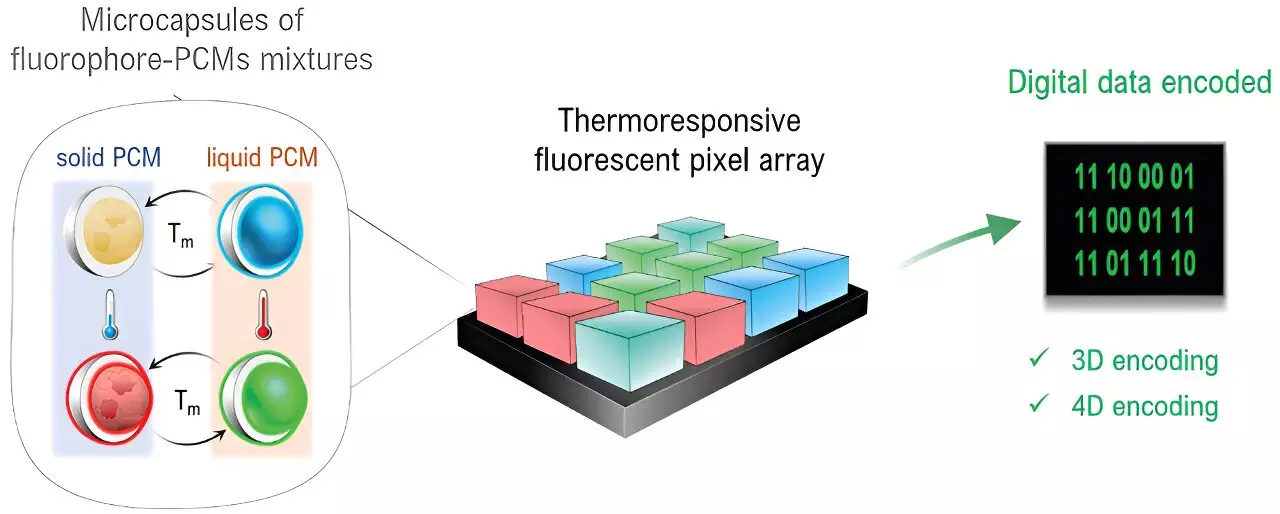In an era where data security and storage efficiency are of paramount importance, a groundbreaking digital encoding and storage system has emerged from the collaborative efforts of a dedicated team of scientists. This innovative system utilizes a unique combination of microcapsules infused with various luminescent dyes alongside phase change materials, marking a significant advancement in fields like cybersecurity and anti-counterfeiting measures. By innovating the methods of data encoding and exploration, the research, led by Dr. Claudio Roscini and Prof. Daniel Ruiz-Molina, provides a promising direction for future advancements.
The advancement in this encoding technology results from a synergistic collaboration between researchers from the ICN2 Nanostructured Functional Materials Group and experts from the Chemistry Department at the Autonomous University of Barcelona. Specifically, their collaboration included Prof. Jordi Hernando and Dr. Jaume Ramón Otaegui, emphasizing the importance of interdisciplinary approaches in tackling complex scientific challenges. This partnership has resulted in a thorough exploration of the possibilities offered by luminescent materials when combined with thermal-responsive substances.
Mechanism and Functionality of the Encoding System
At the core of this research lies a sophisticated pixel system that harnesses microcapsules filled with a mixture of fluorescent dyes and paraffin-based phase change materials. These phase change materials are renowned for their ability to either absorb or emit heat, a characteristic that the researchers have ingeniously exploited to create a novel data encoding mechanism. By manipulating the states of these materials through thermal utilities, the team has devised a method wherein the emitted light color can change in response to thermal fluctuations. This characteristic facilitates two advanced operations: three-dimensional (3D) data encryption and four-dimensional (4D) data storage.
The three-dimensional aspect of this encoding revolves around two key components: the spatial arrangement of the microcapsules (which echoes the mechanics behind traditional QR codes) and their illuminated colors, which add a third dimension. When combined with the fourth dimension—a material’s response to temperature fluctuations—this advanced system showcases immense potential for data resilience and complexity. Such multi-dimensional data encoding can offer a robust deterrent against counterfeiting and unauthorized data access while enhancing storage efficiency.
Applications and Future Prospects
Given the potential applications of this technology, it could revolutionize our approach to both cybersecurity and data storage solutions. The capacity to read and encode data in an efficient, cost-effective, and user-friendly manner sets the stage for broader implementation across various fields. Potential applications range from anti-counterfeiting measures for currency and products to high-density data storage systems that can accommodate growing data needs without a substantial increase in costs or complexity.
The synthesis of luminescent dyes with phase change materials opens a new chapter in the realm of digital data encoding and storage. This innovative research could provide substantial advancements in technological fields where data security is crucial. As the scientific community continues to build upon these foundational ideas, the possibilities for secure data solutions seem boundless, paving the way for a future where our data can be stored and accessed with unprecedented efficiency and safety.



Leave a Reply